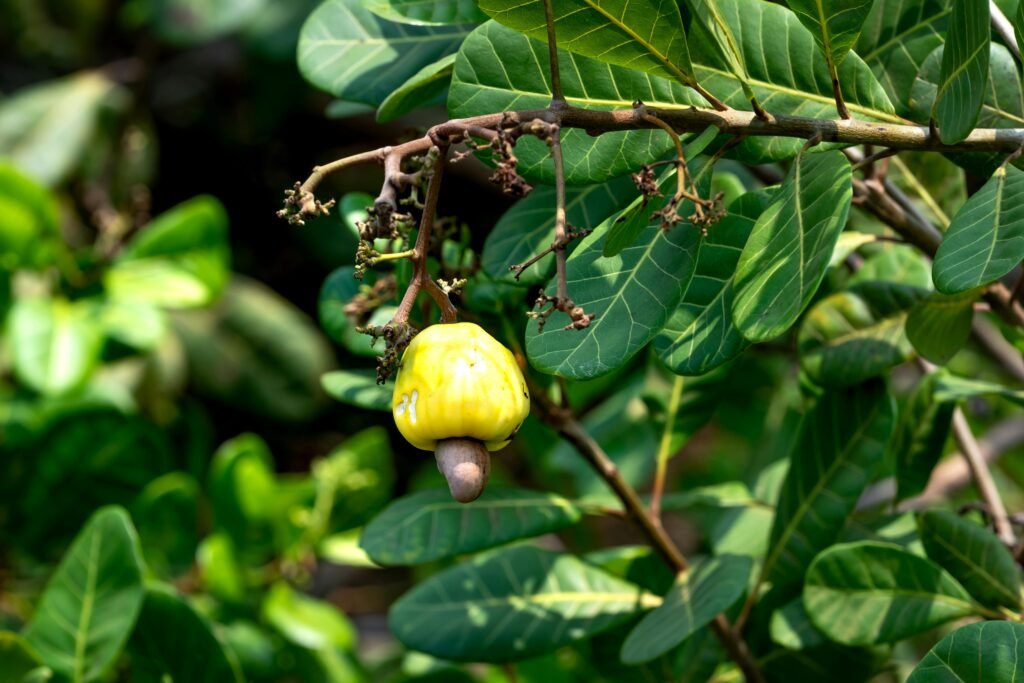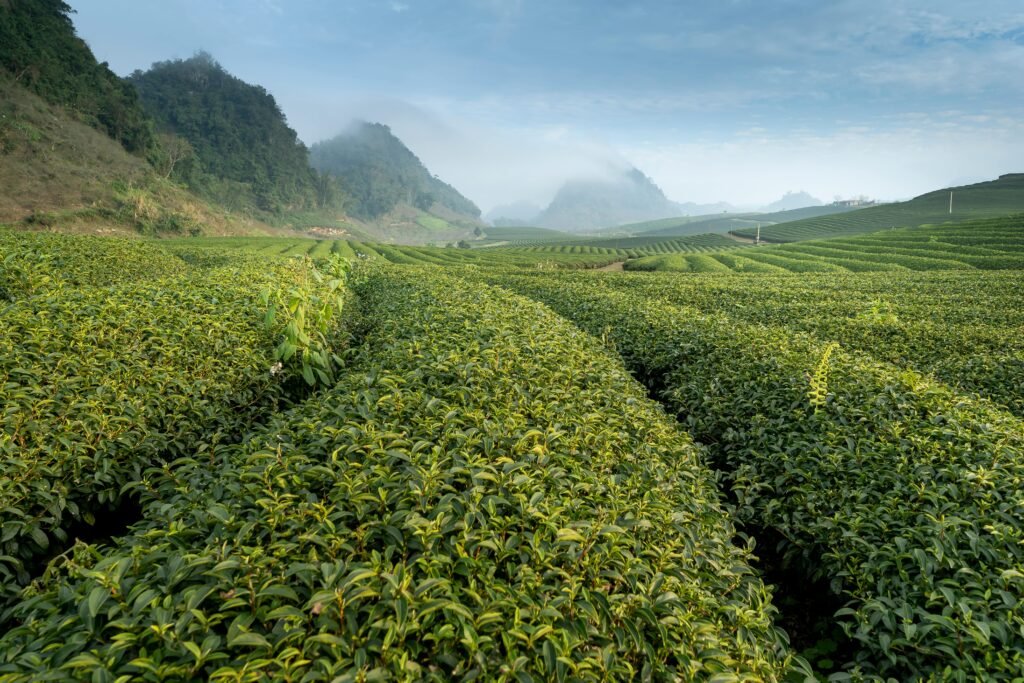Introduction to Cashew Production in India
The cashew industry has played a very vital role in the economy of India. The producers obtain a good income from cashew while it is contributing significantly to India’s agricultural sector as well. India is one of the biggest cashew nut producers globally and the world’s biggest exporter of it. Therefore, India stands at number one in the global market. Cashew trees, or scientifically known as Anacardium occidentale, are well suited to be planted in India’s climate since it is tropical.
The major cashew production in India is limited to the western and southern states, primarily through the contribution of Maharashtra, Kerala, Karnataka, and Andhra Pradesh. The regions provide a very favorable climate and soil type for the growth of cashew trees, which essentially grow well in sandy loam soils and warm climates. Cashew making in India is pretty old-fashioned. This practice has existed for hundreds of years and thus proved that cashew farming has deep connection to Indian culture. The farmers depend mainly on seasonal rains and utilize age-old techniques, including organic practices, to manage their crops sustainably.
Other than having economic importance, cashew farming greatly impacts rural employment. grow this crop as their primary source of income, and the production chain sustains various agro-based industries such as processing and export. Consumers worldwide love cashew nuts for their flavor and nutritional content, creating a continued demand in local and foreign markets. Cashews are not only crucial for money. They also play a significant role in the lives of many individuals who cultivate them. Because climate change affects the agricultural system, it is necessary to know the current state of cashew production and what is expected in this significant industry.
Understanding Climate Change
Climate change means the long-term modification in temperature, precipitation, and other ambient conditions over the Earth. It is essentially caused due to human factors resulting in an increase of greenhouse gases in the atmosphere, notably carbon dioxide and methane. Basically, these gases trap warmth, thus leading to this phenomenon, called global warming. There are many implications of climate change that affect the ecosystems, agriculture, and communities at large.
Scientists believe that, in general, human activities, mainly burning fossil fuel, cutting down of forests, and industrial processes, hasten climate change, which causes the increase in global temperatures that break the prevailing weather patterns. As a result, many parts of the world are experiencing regular severe weather disturbances, such as drought, heavy rain, and subsequently flooding. The extreme weather conditions can create immediate dangers to life, but they also disrupt agriculture, food production and safety, and overall economic stability.
Apart from these direct impacts, climate change can change the geographical distribution of many crops, including cashew, as changing temperatures change the growing conditions. When regions become unsuitable for traditional cultivation practices, farmers may have to change their methods or switch to different varieties. Moreover, the impacts of climate change are not uniform. Regions such as India face unique challenges. Impacts could also vary in intensity according to the specific local environment characteristics, infrastructure, and even the capacity of farmers in adopting adaptive approaches useful for managing these effects.
In general, climate change requires it to be understood completely in how its changes to weather conditions affect agriculture, especially cash crops like cashews, that are important to economies not only at local but even international levels.
How Climate Change is Impacting Agriculture
Global agriculture faces severe impacts from climate change; several crops and food systems are impacted. Probably, one of the most important effects occurs due to changes in precipitation patterns. Changes in rainfall can result in both drought and flooding. This can interfere with the balance required to provide proper crop growth. Regions might experience shifts in the timing and amount of rainfall. Such shifts reduce soil moisture levels, which is critical for crop health.
High temperatures have become one of the biggest threats to agricultural productivity. Most crops, including cashew trees, grow best in particular temperature ranges. Deviations from these temperatures lead to reduced yields and poor quality. For example, when exposed for too long, high temperatures affect flowering and fruit development, thereby causing a reduction in the amount and quality of harvest.
Climate change also brings more pests and diseases. Warm temperatures and changed ecosystems are conducive for pests that live in warmer climates. Once pests migrate to new places, they may cause harm to crop that never had issues before. In such a scenario, we might require more pesticide to kill the increased number of pests. This is harmful to the economy as well as the environment.
Moreover, diseases that were once restricted to certain areas may now spread to new regions. This leads to more chances of crop damage. The impacts of these increases in pest and disease occurrences are very daunting for small holder farmers who may not be in a position to effectively compete with these challenges. If these factors are put together—the changes in precipitation, the temperature rises, and increased pest and disease outbreaks—agriculture faces huge challenges. This, therefore, explains how climate change is changing the nature of cashew production in India.

The Effects of Climate Change on Cashew Cultivation in India
Climate change affects cashew cultivation in India to a great extent. It is an industry that has been very vital for the survival of millions of people which is hit hard by this issue. One of the main impacts is the shift in the flowering and harvesting seasons, directly influencing the growth cycle of a cashew tree. This shift in weather, including fewer or more frequent rains, and hotter temperatures, changes the time at which plants flower. When trees flower at inappropriate times, bees and other animals will find it hard to pollinate them appropriately. This might also impact the growth of nuts.
Another thing is that an increase in average temperatures poses big threats to the cashew production. High temperatures during critical periods can adversely affect the trees’ physiological processes, leading to reduced yield. Cashew trees are sensitive to temperature changes. Thus, prolonged exposure to excessive heat can lead to stress, reduced growth and decreasing the quantity of nuts produced. In the months after the trees bloom, they might make fewer nuts because they spend a lot of energy trying to survive the unfavorable climatic conditions.
In addition to the yield decline, the quality of cashew nuts is affected negatively by climate change. Cashew crops may lack enough moisture due to irregular rainfall, which will have a impact on the size and nutritional value of the nuts.’ In addition, when it rains at different times, cashew trees are more prone to disease and pest attacks that come with warm, wet conditions. All these factors could lead to a lower market price and decreased economic benefits for farmers relying on cashew production.
In short, climate change is causing many problems for cashew cultivation in India. As trees are blooming and producing nuts at different times, and the nuts are getting smaller and less healthy, we need to do something fast so that cashew production in India can continue even as the world gets warmer.
Regional Variations in Impact
Climate change is a big problem for cashew production in many parts of India. It is affecting how farmers grow cashews because the weather is different in different places. Coastal regions are mainly the areas where cashews grow. This area will likely be flooded because of increasing water levels due to global warming. Therefore, it could become unfavourable for cashew production. Saltwater intrusion, where saltwater mixes with freshwater sources, poses severe risks to soil health and crop productivity, which directly affects the yield of cashew nuts in such areas.
Climate change has its set of problems for cashew cultivation areas in dry regions of India. Such regions are prone to droughts, lasting for a long period and thereby causing significant water scarcity. Cashew trees require a certain level of moisture to help in the growth of the trees. Low rainfall not only affects the growth of the trees but also the quality of cashew nuts harvested. Moreover, increased temperatures raise the rates of evaporation of water and affects irrigation, therefore, less than average harvests are recorded.
In addition, changing climatic patterns may affect planting and harvesting seasons. This further complicates traditional agricultural cycles. Farmers in different regions have to adapt themselves to these changes, using different techniques of farming or changing the varieties of crops to meet productivity. Adaptation becomes both resource demanding and challenging especially for small scale farmers with less resources and means to put more into the innovative technologies. Climate change impacts each part of India differently. We need to find solutions that work for each region to help cashew production continue to be sustainable in all areas.
Adaptation Strategies for Cashew Farmers
Climate change is becoming a source of pressure on agricultural systems globally. Indian cashew farmers face an urgent need to adapt to the changing environment. There are various strategies that could be used to manage impacts effectively. Among these, crop diversification is critical. More diverse crops added in the farming practices will help farmers minimize their risks due to climate variability. This secures sources of food and improves the soil health and biodiversity.
Another important strategy for cashew farmers is soil conservation. Mulching, contouring, and agroforestry are conservation practices in soil that help promote soil fertility, prevent erosion, and improve water retention. This builds an ecosystem that can better withstand climatic extremes, ultimately improving cashew production. Soil health management is key because soil affects the growth and yield of cashew trees, hence its importance in sustainable farming.
Climate change also demands efficient irrigation management to adapt to the changing circumstances. With changed patterns of rainfall and potential drought, cashew farmers need to install effective water management systems. This includes drip irrigation or even rainwater harvesting to increase the efficiency of water use without wastage and allow enough hydration for cashew trees. These techniques, along with saving water, lead to increased productivity and thereby help farmers cope with climate change better.
It has been discovered that using climate-resistant cashew varieties can significantly mitigate the effects of climate change. The research and development involved in breeding programs have come up with cashew cultivars that are more resistant to conditions such as drought and pests. The adoption of these varieties may increase yields and quality and lead to the overall sustainability of cashew production in the context of climate change.

Government Initiatives and Support
The Indian government has realized the considerable effects of climate change on agriculture, especially on cash crops like cashew. To reduce the situation concerning cashew farmers, several initiatives and support programs have been initiated for this purpose. These initiatives help the farmers with financial help, training, and much more in order to adapt to the adverse effects of climate change while building their strength.
The National Agricultural Development Programme (NADP) is one of the key programs that seek to develop cashew plantations in terms of financial support. In the program, farmers are provided with subsidies for planting high-yielding varieties and climate-resilient agricultural practices are encouraged. Integrated pest management and soil health management are encouraged by the government to strengthen sustainable production.
The Pradhan Mantri Kisan Samman Nidhi, or PM-KISAN, is another crucial support mechanism. Under this scheme, direct cash transfer is made to eligible cashew farmers. This would minimize the economic burden of changed market prices and increased production costs due to climate change.
The government also focuses on training and capacity building. Various organizations, including the Indian Council of Agricultural Research (ICAR) and state agricultural universities, conducts seminars and workshops to train farmers on productive yet environmentally friendly modern farming techniques. Through training on best practices, a farmer will ultimately become more resilient to climate-related challenges.
Also, initiatives that focus on research and development are important. Developing climate-resilient cashew varieties and promoting agroforestry can significantly help to make the production stable. Overall, the government is working hard to help cashew farmers. This government aims to solve current problems now and help the farmers in changing climate in the future as well.
The Role of Research and Innovation
Research and innovation can significantly contribute to finding a way to address various impacts of climate change in the cashew production line of India. As climate change throws in new challenges to farmers through changed rainfall patterns, higher temperatures, and increase in pest growth, these can only be met scientifically. The agricultural sector is considering innovative changes in agricultural practice for increasing productivity and making cashew farming sustainable.
The more important developments have been the climate-resilient varieties of cashew. These specific cultivars have been bred to possess characteristics that would enable them to withstand changes in the environment. For example, scientists using biotechnological methods were able to identify and insert genes associated with enhanced stress tolerance into cashew crops. This will enable farmers to keep producing cashews while at the same time ensure that their cashew trees are able to grow when the weather changes in an unexpected manner.
Furthermore, with the use of advanced farming technology such as precision agriculture, better cashew production is developed. Utilizing data analytics, farmers can make informed decisions regarding water use, fertilization, and pest control. These in turn will optimize resource utilization and reduce waste. Therefore, using these approaches maximizes yields while reducing climate change negative impacts.
Besides, it is very crucial to carry scientific research. Institutions and scientists are working hard on different forms of agronomic practices, soil health improvement, and different approaches to managing pests to make the entire system more resilient to climate change. Governmental agencies, research institutions, and the agricultural community can collaborate and share knowledge on the best practice that can be applied to their conditions. Such collaboration will enable the cashew industry to be effective in dealing with the impacts of climate change.
In conclusion, as the climate becomes unpredictable and it gets difficult to cultivate cashews in India, more research is needed from the scientists. New ways should be discovered to help the farmers grow cashews. This will decide the future of cashew farming in India.
Conclusion and Call to Action
Climate change is the greatest threat to cashew production in India. It impacts the yield, quality, and livelihoods of thousands of farmers. The increased frequency of extreme weather events and increasing temperatures and changing precipitation patterns present challenges in maintaining optimal conditions for cashew trees to grow under. As discussed above, these factors can lead to reduced production and economic uncertainty for farmers relying on this important crop.
Moreover, the impact of climate change is not only the productivity of agriculture. These impacts affect the whole ecosystem, causing a disturbance to local biodiversity and straining the water resources that are essential for the cultivation of cashews. In case we do not give adequate attention to cashew farming in India and fail to do anything about it, then it might be in big trouble. This, in turn, would be affecting food security and economic challenges in the rural communities.
This really is a big problem. We should see the scale of these problems and address them together. We should promote sustainable farming, especially since the effects of climate change on cashew farming are quite adverse. Such methods can encourage farmers to embrace agroforestry, organic farming, and other techniques that make it resilient against climate change but still increase biodiversity. Also, consumers can also contribute through choosing products that are sustainably sourced and supporting companies that have environmentally friendly practices.
Raising awareness on issues of climate is an important aspect of building community engagement and advocacy. Information shared about the impacts of climate change by individuals on crops such as cashews can lead to action at local and national levels. Communities can come together to promote initiatives that aim to mitigate climate change effects. This would ensure a more sustainable future for agriculture in India.
Finally, everyone must contribute to this effort. Together, we can continue to keep producing cashew nuts while reducing the rising impacts of climate change on our agricultural systems.
Do share your thoughts by commenting below.






